A deviated septum is a common condition affecting millions of people worldwide. It can cause discomfort, breathing difficulties, and other health issues. Understanding its causes and treatment options is key to improving your daily life and overall health.
In this article, we will discuss what a deviated septum is, its symptoms, causes, and the benefits of treating it. We will also explore various treatment options available to help you breathe easy once again. At Penn Medicine Becker ENT & Allergy, our specialists provide expert care to address these concerns.
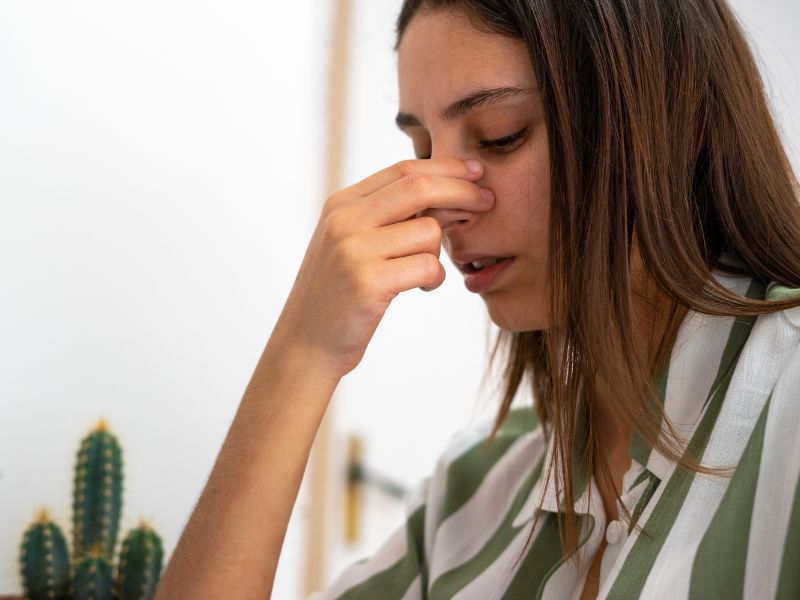
According to the American Academy of Otolaryngology, about 80% of people have a deviated septum, but many don’t notice it.
How to Fix a Deviated Septum
A deviated septum happens when the wall inside your nose (the septum) is bent or off to one side. This can make it harder to breathe, cause stuffy noses, or even lead to snoring. Fixing it depends on how bad the problem is and how much it bothers you.
Non-Surgical Relief (For Milder Symptoms)
If your symptoms are mild, you don’t always need surgery—doctors often suggest things to make breathing easier. These won’t fix the bend in your septum, but they can make life more comfortable.
Can You Fix a Deviated Septum Without Surgery?
The short answer is: you can’t permanently straighten the septum without surgery. However, you can manage the symptoms with the treatments above. Think of it like patching a problem — it makes things easier, but it doesn’t fix the root cause.
Surgical Option: Septoplasty
If your deviated septum is making it really hard to breathe, surgery may be the best option. The procedure is called septoplasty:
- The doctor makes a small cut inside your nose, repositions or removes the crooked parts of cartilage and bone, and then places them back in the right spot.
- Sometimes, this surgery is combined with rhinoplasty (a nose job) if you also want to change how your nose looks.
Most people go home the same day, but you’ll need to rest for about a week or two before feeling fully back to normal.
When to See a Doctor
If you constantly feel blocked up on one side, get frequent nosebleeds, or struggle to breathe through your nose, it’s a good idea to talk with a doctor. They can tell you if medicine is enough — or if surgery might actually give you the relief you need.
What is a Deviated Septum?
The nasal septum is a thin wall made of bone and cartilage that divides the two sides of the nose. When this wall is displaced to one side, it is considered “deviated,” making one nasal passage more narrow. This can lead to trouble breathing, nasal congestion, and other symptoms. In some cases, the deviation may be so severe that it blocks one or both nostrils entirely, making it difficult to breathe through the nose.
A deviated septum can be caused by genetics, facial injuries, aging-related cartilage changes, or chronic conditions like allergies or sinusitis. It is estimated that 70% to 80% of the population has some degree of septal deviation, although not everyone experiences symptoms or requires treatment.
An ENT specialist can diagnose the cause and recommend treatment.
Symptoms of a Deviated Septum
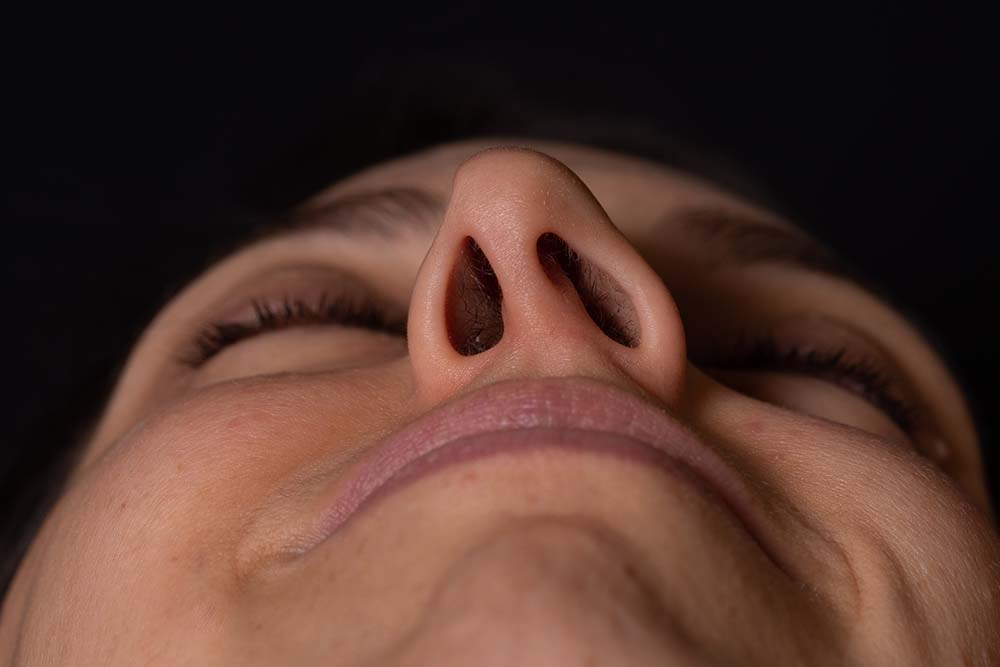
A deviated septum can cause various symptoms, depending on the severity of the deviation. Some common symptoms include:
Not everyone with a deviated septum will experience these symptoms. In some cases, the deviation may be minor and not cause any noticeable issues. However, if you are experiencing any of these symptoms, the specialists at Penn Medicine Becker ENT & Allergy can determine the underlying cause and discuss appropriate treatment options with you.
Start Breathing Easier and Feeling Better Today
Fixing a deviated septum can greatly improve your life. Penn Medicine Becker ENT & Allergy is here to help every step of the way.
Treatment Options for a Deviated Septum
There are several treatment options available for a deviated septum, ranging from non-invasive methods to surgical intervention. The choice of treatment depends on the severity of the deviation and the symptoms experienced by the patient. Consult with an experienced facial plastic surgeon or ENT to determine the most appropriate treatment option for your specific needs.
Non-Invasive Treatments for a Deviated Septum (Septum Without Surgery)
In some cases, non-invasive treatments can help manage the symptoms of a deviated septum. These options include:
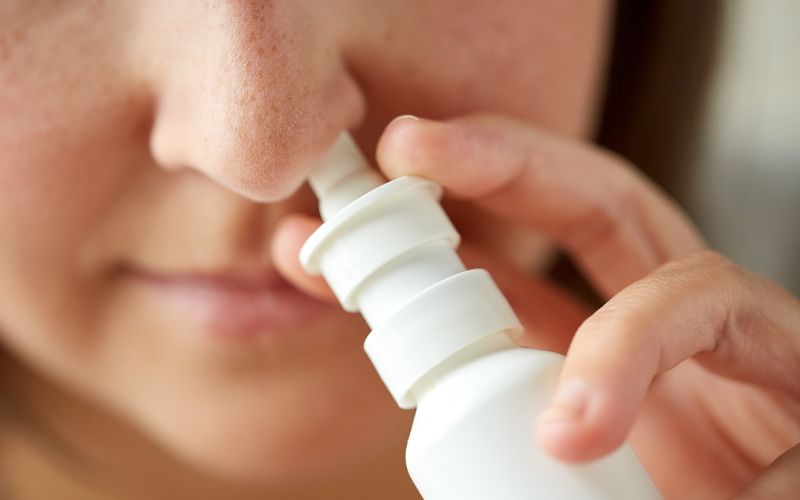
Nasal Steroid Sprays
Nasal steroid sprays can reduce inflammation and swelling in the nasal passages, helping to alleviate symptoms such as congestion and difficulty breathing. They are typically used once or twice daily and can take a few weeks to show full effect.
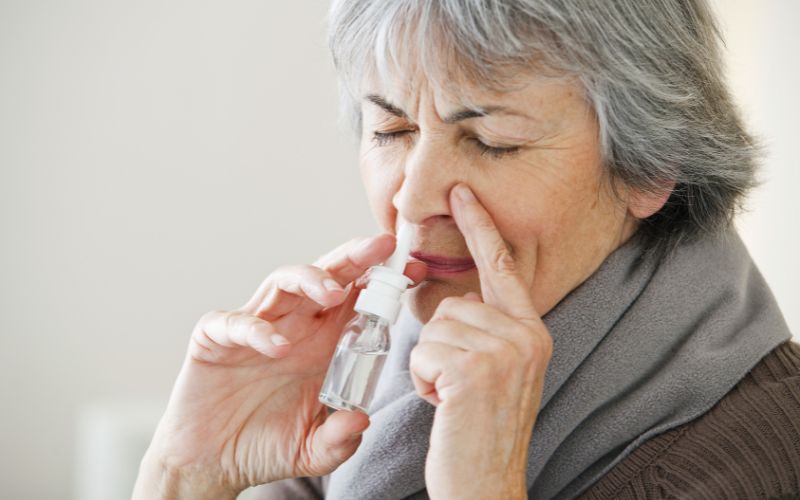
Decongestants
Decongestants can provide temporary relief from nasal congestion by reducing the swelling of blood vessels in the nasal passages. These can be taken orally or as nasal sprays. However, they should not be used for extended periods due to potential side effects such as increased blood pressure and rebound congestion.

Antihistamines
If allergies are contributing to nasal congestion, antihistamines can help by reducing allergic reactions. They can be taken in pill form or as nasal sprays and may provide relief from symptoms like a runny nose and sneezing.

Nasal Saline Irrigation
Saline irrigation, using a neti pot or a saline spray, can help clear nasal passages of mucus and allergens. This can reduce congestion and improve breathing. It is recommended to use sterile or distilled water to avoid infections.

Breathing Exercises
Certain breathing exercises, such as the Buteyko method or nasal cycle techniques, can help improve nasal airflow and reduce symptoms. These exercises often focus on breathing through the nose and controlling breathing patterns to enhance nasal function.

Humidifiers
Using a humidifier can add moisture to the air, preventing nasal passages from becoming dry and irritated. This can help reduce congestion and improve overall nasal comfort.
Identifying and avoiding irritants such as smoke, strong odors, and allergens can help reduce nasal congestion.
While non-invasive treatments may provide temporary relief, they do not address the underlying cause of the deviated septum. Always consult and expert ENT specialist if the symptoms persist.
Rhinoplasty: Surgical Correction of the Deviated Septum
For more severe cases or when non-invasive treatments are not effective, deviated septum repair surgery may be necessary. This surgical procedure can correct a deviated septum and also improve the overall appearance of the nose. During the procedure, the surgeon will make incisions inside the nostrils to access the nasal septum. The septum is then straightened and repositioned to remove the nasal obstruction.
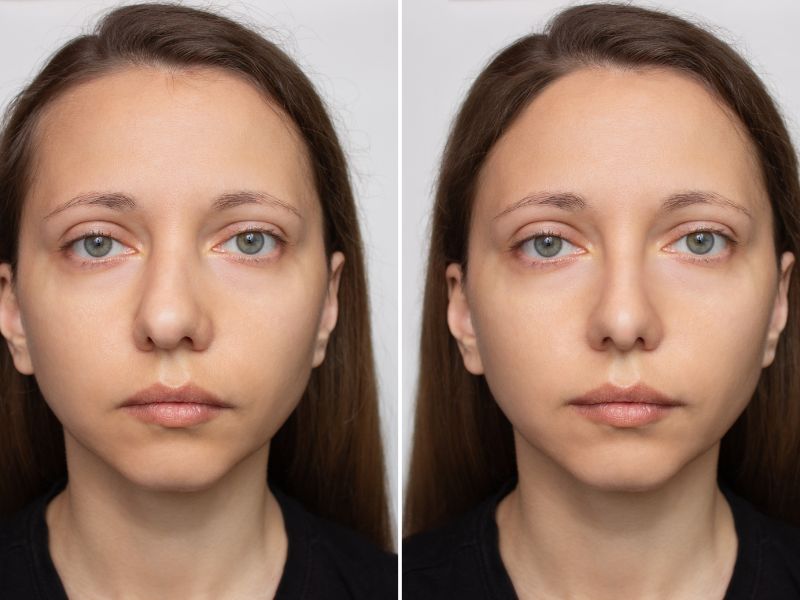
Septum Surgery
Septoplasty is the primary surgical option for correcting a deviated septum. This procedure involves repositioning and straightening the nasal septum to improve airflow and alleviate breathing difficulties.
Recovery typically requires a few days of rest, with most patients returning to normal activities within a week, although full recovery may take several months.
Risks associated with septoplasty include bleeding, infection, and potential changes in the shape of the nose. It is essential to discuss these risks and the expected outcomes with an ENT specialist to determine if septoplasty is the right option.
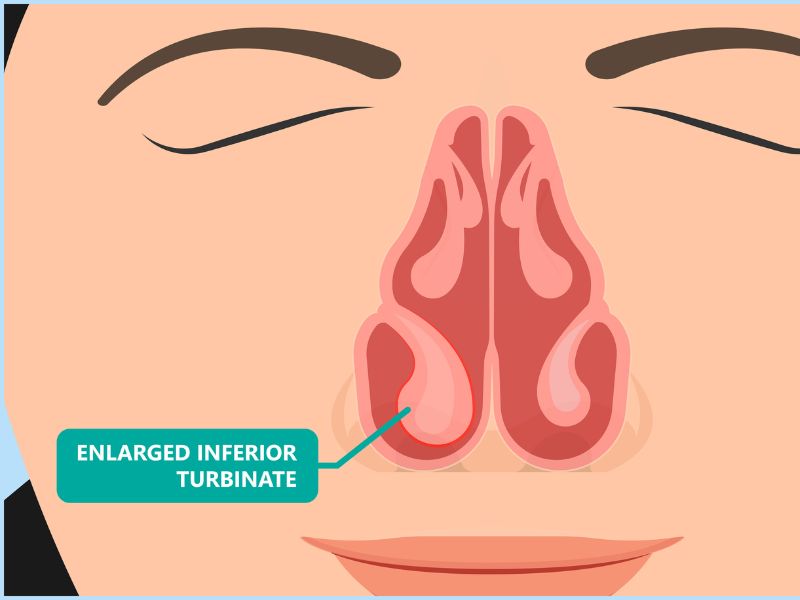
Turbinate Reduction
Turbinate reduction is a procedure aimed at decreasing the size of the turbinates, structures within the nose that can contribute to nasal obstruction. This surgery helps improve airflow by reducing the swelling of the turbinates, which are responsible for warming and humidifying the air we breathe.
The recovery process is generally quick, with patients experiencing minor discomfort and congestion during healing.
However, potential risks include dryness in the nasal passages and crusting, which should be discussed with a healthcare provider before undergoing the procedure.
Preparing for Surgery to Fix a Deviated Septum
Before undergoing surgery to correct a deviated septum, it is essential to properly prepare for the procedure. Here are some steps to take in preparation for your surgery:
- Consult with your surgeon: Discuss your expectations and any concerns you may have with your surgeon. They will provide you with detailed information about the procedure, risks, and recovery process.
- Undergo a physical examination: Your surgeon may perform a physical examination to assess the severity of your deviated septum and ensure you are a suitable candidate for surgery.
- Stop smoking: If you are a smoker, it is essential to quit smoking at least two weeks before the surgery, as it can interfere with the healing process.
- Avoid certain medications: Your surgeon may advise you to stop taking certain medications, such as aspirin, ibuprofen, or other blood-thinning medications, to reduce the risk of bleeding during the surgery.
- Arrange for transportation and assistance: Since you will be under the influence of anesthesia, you will need someone to drive you home after the procedure. It is also helpful to have someone available to assist you during the initial recovery.
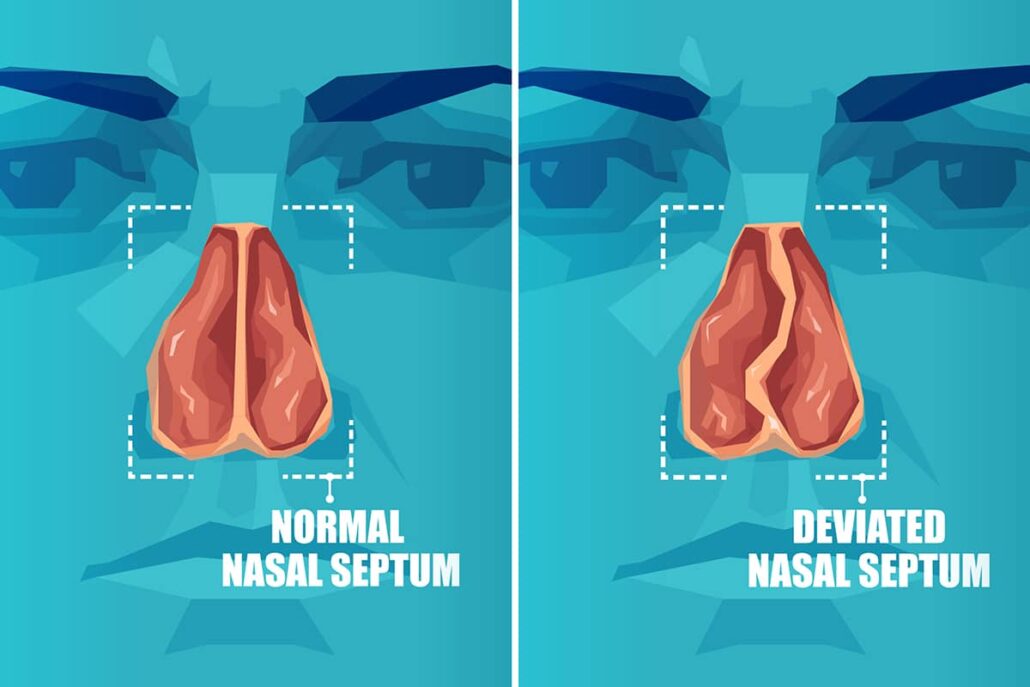
Following these steps will help ensure a smooth surgical process and reduce the risk of complications.
Case Study: Life-Changing Results After Septoplasty & Turbinate Reduction
Overview:
Matt suffered for years with a severely deviated septum and enlarged turbinates that left him unable to breathe through his nose. Everyday life felt restricted — poor airflow limited exercise, sleep quality, and even the simple ability to enjoy scents. After undergoing septoplasty and turbinate reduction with Dr. Ahmed, his breathing improved dramatically and has stayed consistent more than three years later.

“Dr. Omar Ahmed performed my septoplasty and turbinate reduction several years ago. Prior to the surgery, my septum was deviated on both sides and I couldn’t breathe at all out of my nose. Three+ years later, I can breathe almost perfectly through both nostrils, which has changed my life. I recall the first time after my surgery I went to New York City and smelled all the incredible and weird street smells for the first time (it was amazing and overwhelming). I am incredibly grateful to Dr. Ahmed for this life-changing result. He is an incredibly skilled, kind, and patient doctor who always answers questions. His office fought hard with my insurance company to get me a follow-up procedure to improve my breathing further. I give Dr. Ahmed my highest praise and recommendation.“
Patient: “Matt P.”
Visit Type: Septoplasty + Turbinate Reduction
Treatment Journey (Step by Step):
Outcome (Matt’s Result):
Key Takeaways:
Aftercare Following Surgery to Fix a Deviated Septum
Proper aftercare is crucial for a successful recovery after surgery to correct a deviated septum. Here are some tips for post-operative care:
- Follow your surgeon’s instructions: Your surgeon will provide you with specific instructions on how to care for your nose after the surgery. Make sure to follow these guidelines carefully to ensure a smooth recovery.
- Keep your head elevated: To minimize swelling and promote healing, it is essential to keep your head elevated, especially during the first few days after surgery.
- Apply cold compresses: Gently applying cold compresses to your nose and face can help reduce swelling and alleviate discomfort.
- Avoid blowing your nose: Refrain from blowing your nose for at least two weeks after the surgery, as this can disrupt the healing process.
- Take prescribed medications: Your surgeon may prescribe pain relievers, antibiotics, or other medications to manage pain and prevent infection. Make sure to take these medications as directed.
- Attend follow-up appointments: Attend all scheduled follow-up appointments with your surgeon to monitor your progress and address any concerns.
By adhering to these aftercare guidelines, you can expect a successful recovery and enjoy the benefits of improved breathing and overall well-being.

